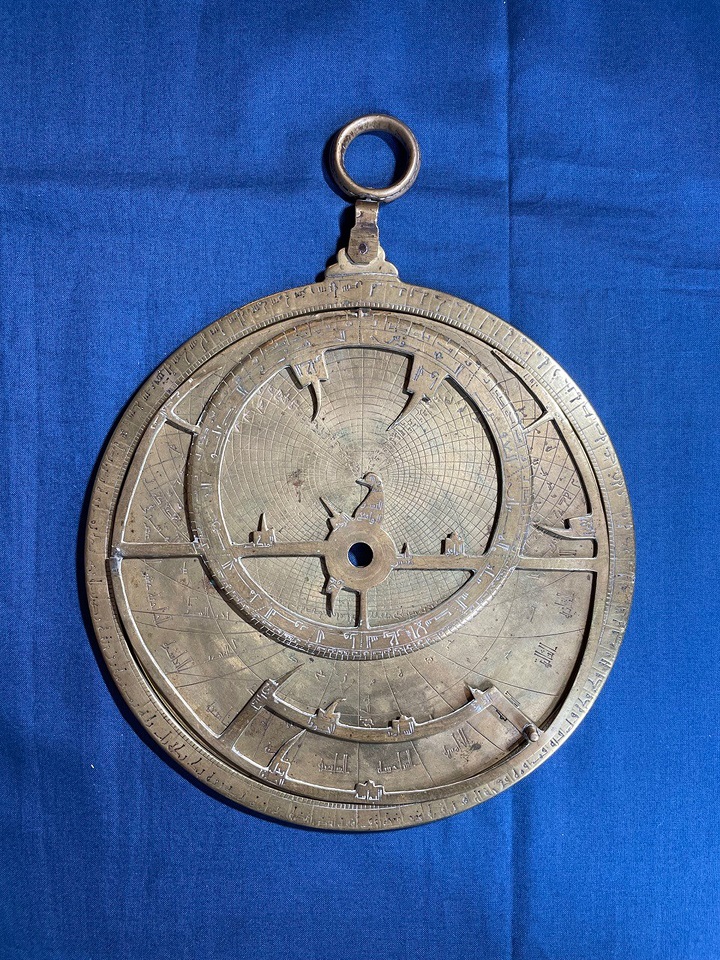I always think of planispheres when I think of astrolabes! Navigators used these ancient devices (astrolabes not planispheres) to provide an accurate map of the stars in the sky. To use them you would match up the metal plates to the sky and you could calculate your location. Astrolabes date back to 220BC but one with Hebrew and Arabic markings was found and it is thought to have originated back in the 11th Century.
Historian at Christ’s College, Cambridge, Dr Federica Gigante came across the astrolabe by chance in an image on the website of Fondazione Museo Minisccalchi-Erizzo in Verona. Dr Gigante published an article in Nuncius (the Journal of the Material and Visual History of Science) and suggests that the ancient device had been changed a number of times. After it was made, it seems to have been physically adapted, translated and corrected over the centuries by Muslim, Jewish and Christian sky watchers from Spain, North Africa and Italy.
Having seen the astrolabe online, Dr Gigante visited the museum to study it up close. She reports “When I visited the museum and studied the astrolabe up close, I noticed that not only was it covered in beautifully engraved Arabic inscriptions but that I could see faint inscriptions in Hebrew. I could only make it out in the raking light entering from the window. I thought I might be dreaming but I kept seeing more and more. It was very exciting.”
The astrolabe has a feature known as a ‘rete’ which is a pierced disk that represents a map of the sky. The position of the stars upon the disk reveal that they were added on the instrument in the late 11th Century making it one of the earliest astrolabes made in Spain. Dr Gigante is well placed to analyse it as she is an expert on Islamic scientific instrument. The engravings and arrangement of the scales reminded her of instruments made in the Muslim ruled area of Spain known as Al-Andalus. In her article she reports it may have been made in Toledo which would have been a place of co-existence between Muslims, Jews and Christians at the time.
Careful study revealed Jewish names in Arabic script which suggested it had been used in the Sephardi Jewish community where Arabic was the language of the day. There was a second plate which had been added after the astrolabe had been made and had been inscribed for North African users. It may have been used therefore, in Morocco in Egypt. Further to the African, Arabic and Jewish links the Hebrew markings suggested it had left Spain and North Africa and found its way to Italy where it was likely to be used by the Jewish Diaspora community that would use the Hebrew language instead.
It seems this insignificant looking, hand held device has had a rich history and that history seems to have been revealed as its owners changed and transitioned from one community to the next. It is thought to have eventually made its way to the collection of the nobleman Ludovico Moscardo from Verona before it was passed on to the Miniscalchi family and ultimately on to the museum where it is still on view today. I doubt my planisphere will have such a rich life!
Source : Rare astrolabe discovered in Verona reveals scientific exchange

